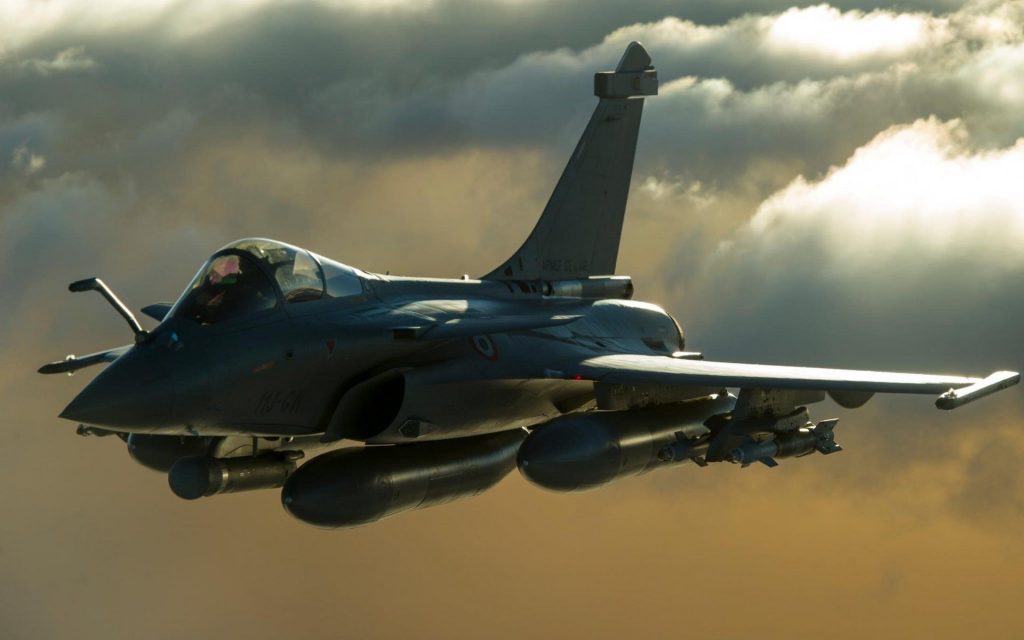Defense deals are often mired in controversies, and huge commissions are believed to be part of every deal. It is not only arms manufacturing mega corporations but also the host country’s government’s involvement that makes it impossible to unravel the massive kickbacks that invariably take place. It is said, ‘War is great business’. This alone is enough to understand the hegemony and clout that the handful of sophisticated arms manufacturing countries enjoys across the world. India is not alone but it is one of the biggest arms and ammunition purchasing nations. Most second and third world countries get mired in corruption charges whenever such deals are struck. At a point in history, even a developed country such as Japan got so deep in corruption charges relating to purchases made from Boeing that the country’s then prime minister was compelled to step down.
It always remains clouded as to who gets and how. The Bofors field guns deal in the 1980s had led to a major outcry over commissions changing hands; but long years of investigation and legal fights produced nothing more than smoke and little of fire. So also with the VVIP Augusta Westland helicopter scam. The Dassault Rafale fighter aircraft deal, the first part of which will see delivery of 36 aircrafts from France to India at a cost of about Rs 60,000 crore, is the latest to invite strong criticism of wrongdoing by the Narendra Modi-led NDA government.
While the Opposition is already up in arms over suspected hidden clauses in the deal signed by the Modi government, former French president Francois Hollande is the latest to put Modi on the defensive. The deal, earlier signed in 2012 by the UPA government, was for buying 18 ready-to-fly aircraft; each was to cost Rs 560 crore. Another 108 aircraft were to be assembled here in India. These were to be assembled/manufactured by Hindustan Aeronautics Limited (HAL). Modi renegotiated the deal in 2015 for the same aircraft at a whooping Rs 1,670 crore per aircraft. Interestingly, the new deal is to buy 36 ready-to-fly aircraft. HAL was completely kicked out of the picture. And Defense Minister Nirmala Sitharaman later claimed the government-owned aircraft manufacturer was incapable of manufactuing the Rafale.
Hollande’s statement that India had asked France as also Dassault to bring in the Anil Ambani-led Reliance Defense Limited (RDL) as a service provider for the manufacture and delivery of the aircraft has opened a can of worms. The former head of the French government, during whose tenure the second deal was struck, does not seem keen on pressing the point further. The statement, however, does cause the Indian government considerable embarrassment. Some may now conclusively understand that those in government or the ruling BJP sought to derive pecuniary benefit via the Ambani group. Further clarity about the charge may or may not come by easily but Hollande’s remark has nailed the lie. While the Indian government is known to have signed the Rafale deal on 10 April 2015, Anil Ambani’s RDL was registered as a firm on 28 March 2015. That makes RDL a 14-day-old company that the NDA found suitable to handle defense deals worth billions of dollars for this country.
The Opposition cannot be faulted for its strong stand in respect of the deal. Hollande’s statement has given it new ammunition to take on the Modi government, and that too at a time when the nation is getting set for fresh parliamentary polls.
Rafale fighter aircraft is not rated very high, if its clientele list is checked. Having been inducted into service in 2001, this aircraft is used mainly by France’s own air force and navy. Not many nations have evinced interest in it, even as France has a high reputation in aircraft manufacture and aviation technology. European air forces are known to prefer the Eurofighter Typhoon, rejecting the Rafale fighter jet, while its client so far is only Egypt, and Qatar is expected to buy some in the future. The UAE, for one, did not pursue a planned deal. Although the Rafale fighter aircraft was in use in combat missions in Afghanistan, Libya, Mali, Iraq and Syria, at the behest of NATO or by France itself in allied combat operations alongside the US, it has a history of mishaps and crashes.
While Indian politicians talk big about the soldier standing guard at Siachen and preach all to respect the soldier, little effort is made to acquire the best equipment to strengthen the same warriors.
While a highly empowered China on the one side and a well armed scheming Pakistan on the other encircle India, our leaders seem least bothered about the precarious defense preparedness of India.
